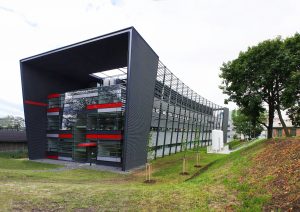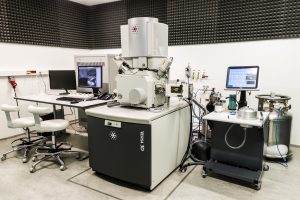In the legal environment, the increased emphasis placed on European research infrastructures led in 2009 to the creation of an entirely specific EU legal framework defining the principles of management and funding of such research infrastructures. This brand new legal entity of ERIC – European Research Infrastructure Consortium – enables adoption of diverse and fully flexible models for the management of European research infrastructures. The ERIC legal framework has been introduced by the Council Regulation (EC) No 723/2009 of 25 June 2009 on the Community legal framework for a European Research Infrastructure Consortium (ERIC), which was amended by the Council Regulation (EU) No 1261/2013 of 2 December 2013 amending Regulation (EC) No 723/2009 concerning the Community legal framework for a European Research Infrastructures Consortium (ERIC) and which allows an ERIC organisation to be recognized in all EU Member States.
EATRIS-CZ – Czech national node to EATRIS ERIC (European Advanced Translational Research Infrastructure in Medicine)
European research infrastructures bearing the legal personality of the ERIC are always operated on the non-profit basis, while the ERIC legal framework allows them to develop the economic activities to a limited extent only. The main benefit of the ERIC organisation is that its establishment procedure is much simpler than the standard international organisation established under the public international law. Other benefits of the ERIC legal entity are the possibilities to benefit from tax exemptions, namely exemption from payment of the value added tax or excise duties. The ERIC organisation may also adopt its own procurement policy if it complies with the principles of transparency and competition and the public procurements are announced on the non-discriminatory basis. EU Member States, Associated Countries, third countries or international organisations may become the ERIC Members. The agenda of the ERIC falls under the responsibility of the Directorate General of the European Commission for Research and Innovation (DG RTD). An ERIC must always be founded by at least 3 Founding Members. How to proceed specifically during the establishment of an ERIC legal entity is described in necessary detail in the ERIC Practical Guidelines, issued for that purpose by the European Commission.
CzeCOS – Czech national node to ICOS ERIC (Integrated Carbon Observation System – European Research Infrastructure Consortium)
Memberships of the Czech Republic in ERIC
In the Czech Republic, the Ministry of Education, Youth and Sports (MEYS) is responsible for the ERIC memberships since it is the national public authority in charge of the large research infrastructures and international cooperation of the Czech Republic in research and development. Given that, the MEYS ensures the Czech memberships in the ERIC organisations and represents the Czech Republic on the platforms of their governing bodies. Within this mission, the MEYS always closely collaborates with the representatives of the research community of the Czech Republic, who ensure the scientific aspects of the Czech memberships. In the case of distributed European research infrastructures, the research community usually operates the Czech national nodes of such facilities. In the case of the “single-sited” European research infrastructures, the Czech research community usually engages in the way of the “in-kind” technology deliveries. The Czech Republic is currently, via the MEYS, a Member State of the following ERIC organisations:
- ACTRIS ERIC (Aerosol, Clouds and Trace Gases Research Infrastructure),
- AnaEE (Infrastructure for Analysis and Experimentation on Ecosystems);
- BBMRI-ERIC (Bio-banking and Bio-molecular Resources Research Infrastructure),
- CERIC-ERIC (Central European Research Infrastructure Consortium),
- CESSDA ERIC (Consortium of European Social Science Data Archives),
- CLARIN ERIC (Common Language Resources and Technology Infrastructure),
- DARIAH ERIC (Digital Research Infrastructure for the Arts and Humanities);
- EATRIS-ERIC (European Infrastructure for Translational Medicine),
- ECRIN-ERIC (European Clinical Research Infrastructure Network),
- ELI ERIC (Extreme Light Infrastructure),
- ESS ERIC (European Social Survey),
- Euro-BioImaging ERIC (European Research Infrastructure for Imaging Technologies in Biological and Biomedical Sciences);
- European Spallation Source-ERIC,
- EU-OPENSCREEN ERIC (European Infrastructure of Open Screening Platforms for Chemical Biology),
- ICOS ERIC (Integrated Carbon Observation System),
- Instruct ERIC (European Integrated Structural Biology Infrastructure),
- SHARE-ERIC (Survey of Health, Ageing and Retirement in Europe).
CIISB – Czech national node to Instruct-ERIC (Integrated Structural Biology – European Research Infrastructure Consortium)
Prospective memberships of the Czech Republic in ERIC
Since 2009, the ERIC legal framework has been widely used for organising the operations of European research infrastructures. A number of European research infrastructures is considering the adoption of the ERIC legal framework or has already taken the path to acquire the ERIC legal personality, besides other reasons due to the benefits resulting from the ERIC legal status. The MEYS decides on joining the ERIC organisations always in direct relation to the statuses of respective large research infrastructures on the Roadmap of Large Research Infrastructures of the Czech Republic. The facilities included in the Roadmap, which have been approved for the public funding by the Government of the Czech Republic, are intensely supported by the MEYS in their international integration activities. In the nearest future, the Czech Republic shall become a Member State of the ERIC organisations managing the following European research infrastructures:
- CTA (Cherenkov Telescope Array);
- DANUBIUS-RI (International Centre for Advanced Studies on River-Sea Systems);
- INFRAFRONTIER (European Research Infrastructure for Phenotyping, Archiving and Distribution of Model Mammalian Genomes).
CCP – Czech national node to INFRAFRONTIER (European Research Infrastructure for Phenotyping, Archiving and Distribution of Model Mammalian Genomes)



